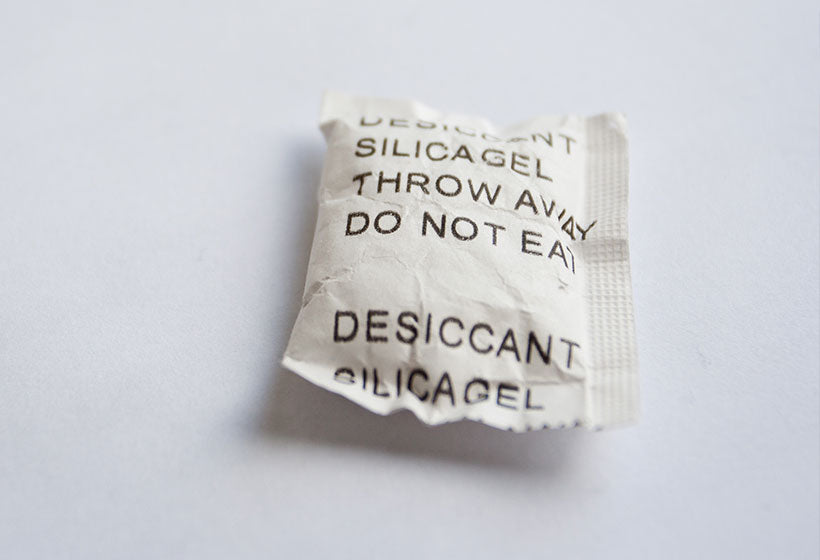Have you ever found a little packet in a box that says "Do Not Eat"? That's a desiccant bag. These handy packets keep your goodies dry by sucking up water from the air. Think of a desiccant bag like a superhero for your stuff, fighting against dampness that can ruin things. Whether you've got electronics, snacks, or clothes, these bags help you stay dry and safe. But what do you do when the desiccant bag gets full of water? Don't toss it out – you can dry it and use it again!
Materials Needed: List of Necessary Equipment and Tools
When you're ready to dry out a desiccant bag, you won't need a bunch of fancy gadgets or a toolbox full of gear. It's a simple task, but you must have the right stuff. First off, you need an oven. It's the main tool that will do the heavy lifting, warming up those moisture-loving beads so they can let go of the water they've been holding on to.
Next up is an oven thermometer. This isn't just a regular thermometer; it's special for ovens. It makes sure the heat stays where you want it. Without it, you might get the oven too hot, and that's bad news for the beads. They need gentle warmth, like a sunny day, not a scorcher that could hurt them.
You'll also need a bake-safe dish or some aluminum foil. This is where you'll spread out the beads from the desiccant bag. Imagine you're making cookies, but instead of dough, you have these little beads that need space to lay out flat and get evenly heated.
If your desiccant bag is full of silica gel, which is the stuff that changes color when it's dry or wet, you might also use a microwave. But this is like a quick zap of heat, not a long bake. It's faster but needs more attention.
Step 1: Preparing the Desiccant Bag for Drying
To get your desiccant bag ready for drying, you want to start with a little prep work. It's like getting ready for a day at the beach – you don't just run into the water; you put on sunscreen first. Instead of sunscreen, you're setting things up so the drying goes smoothly.
First, if your desiccant bag has a paper-like cover, you must remove the beads from it. Why? Well, the oven is no place for paper – it can burn, and that's a big no-no. If your bag is made of cloth or a material that can take the heat, you can leave the beads where they are.
Next, take your bake-safe dish or lay out a sheet of aluminum foil. This is where you'll spread out the beads. You want them in a single, shallow layer. No bead mountains here – if they're piled up, they won't all dry properly. They need their personal space, just like we sometimes do.
You'll want a microwave-safe dish if you're using a microwave instead of an oven. Remember, no metal in the microwave – sparks fly, not in a good way. Spread the beads in the dish just like you would for the oven.
Once your beads are all laid out and ready, it's time to give them the warmth they need to let go of that moisture. This step is all about setting the stage for success. You've got your beads ready and waiting so you can move on to the actual drying part. It's like they're sunbathing, only in your oven or microwave, getting all dry and ready to get back to work, keeping things dry.
Step 2: Choosing the Appropriate Drying Method
The right method is key when it's time to dry your desiccant bag. Think of it like choosing the right tool for a job. You wouldn't use a hammer to cut a piece of paper. The same goes for drying desiccants. You have a couple of options; the best depends on what you've got at home and how much time you have.
If you've got an oven and some time to spare, that's a great way to go. The oven gives a nice, even heat that wraps around the beads, coaxing the moisture out gently. You'll want to set it to a low heat – about 175 to 250 degrees Fahrenheit. This is the slow and steady method, like a turtle winning a race.
But maybe you're in a hurry or have a small amount of beads to dry. Then the microwave could be your best friend. It's like the hare in the race – quick and fast. You'll zap the beads in short bursts, like little sprints, until they're dry. But watch out – if you go too fast, you might ruin them, so pay close attention.
Whatever your chosen method, it's about the right temperature and time. Like baking a cake, you'll have a perfect dessert if you get those right. Or, in this case, perfectly dry desiccant beads ready to go back into action. Remember to watch them because every oven and microwave is different. You're the chef in this drying recipe, so take charge and keep your beads from getting too hot to handle.
Step 3: Executing the Drying Process
Once you've chosen your drying method, it's showtime for your desiccant bag. Using the oven, gently place your prepped beads on the middle rack. Set your oven thermometer to check the temperature. You don't want to cook your beads; you want to dry them. They're basking in the sun, not in a race against time. Give them about 1-2 hours at that low and slow heat, and they'll be as good as new.
In a microwave, the process feels more like a sprint. Spread the beads in a microwave-safe dish and heat them in short bursts. Think of it like popcorn – you listen for the pops to slow down. Here, you're watching for the color change in the beads, which tells you they're dry. Take breaks between each zap to make sure you're not overheating them.
During this process, patience is your pal. Whether going slow in the oven or quick in the microwave, give your beads the necessary time. Don't rush them. They're working hard to let go of moisture. When they're done, they'll be lighter; if they're the color-changing kind, they'll show their happy, dry color.
Step 4: Testing the Effectiveness of the Drying
Testing if your beads are dry enough is like checking if a cake is done. You can't just look – you have to test. If your desiccant bag contains color-changing silica gel, it's easy. The color tells you when they're ready. It's like a traffic light turning green. If it's blue, you're good to go.
If there's no color to guide you, use your senses. Touch the beads. They should feel dry, not sticky or damp. Weigh them if you have a scale. They should return to their original weight, light, and ready for action.
Keep Your Valuables Safe with Royco Packaging Desiccants
Don't settle for less when it's time to safeguard your items against moisture. Choose Royco Packaging, your premier source for top-tier desiccants. Our desiccants ensure optimal protection for MIL-SPEC, industrial, or specialty needs. Don't let humidity damage your valuable goods. Trust in the quality and reliability of Royco Packaging to deliver the moisture defense you require. Visit our collection today and give your products the care they deserve with our superior desiccants. Click to secure the protection your items need.

